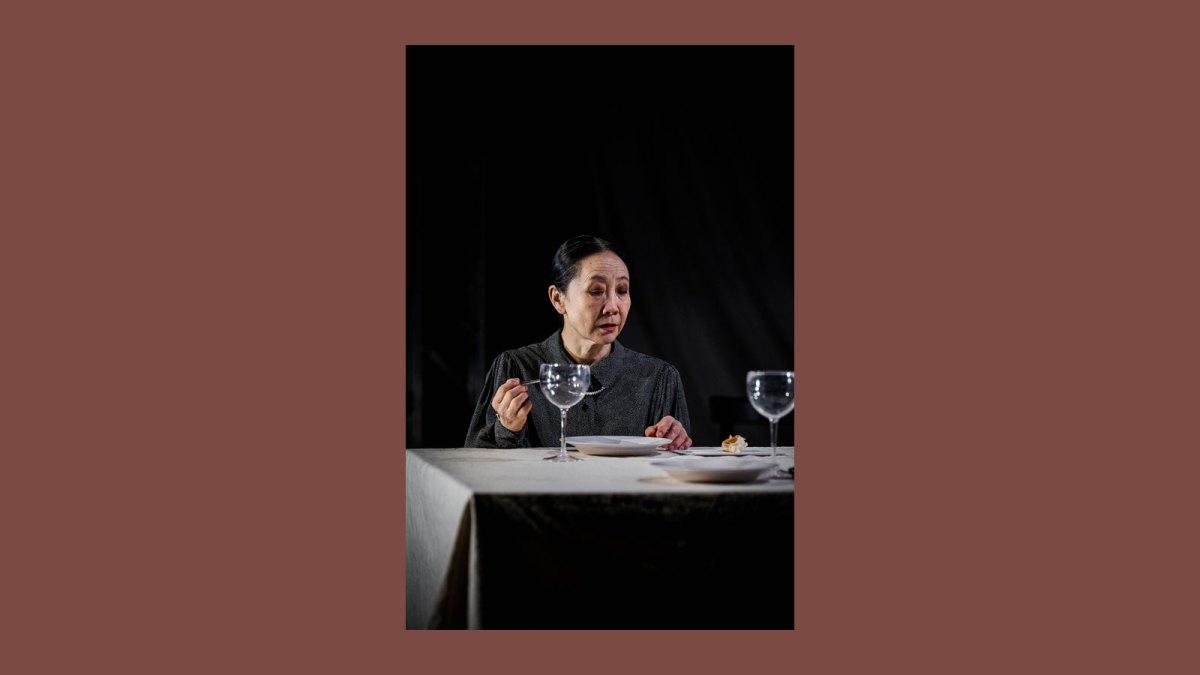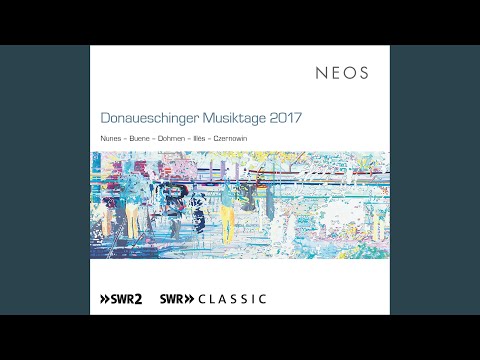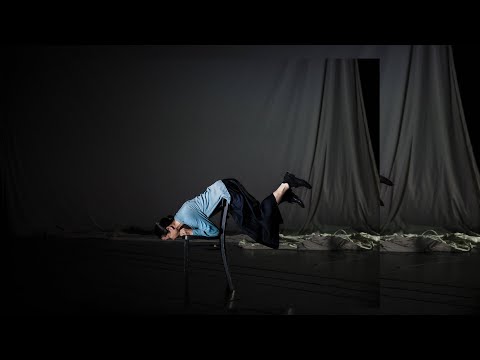I.
I had come to Munich searching for an archive I wasn’t sure was there. This was several years ago now, back when I was still fumbling toward a book on post-war opera—something about its relation to genre, history, and mourning; the sketches are still tucked in a drawer somewhere—and at the time, Munich was hallowed ground. In 1988, Hans Werner Henze’s biannual festival for contemporary opera christened the city with serious commissioning power, and it has served as a testing ground for major developments in music theater since. (There was a brief bid in the late ‘90s to shift that axis back towards Hamburg—Lachenmann’s “Das Mädchen mit den Schwefelhölzern” is the most memorable result of that venture—but nothing serious took hold.) Today, Berlin has largely superseded them both. Ostensibly, I came to Munich to better understand the socioeconomic infrastructure lying behind so many significant premieres: Poppe, Ferneyhough, Baukholt, Sánchez-Verdú, Steen-Andersen, Schnebel, and Lang all had new operas here.
Privately, though, I had come to find “Pnima.”
Premiered at the Biennale in the summer of 2000, Chaya Czernowin’s first opera is, I’ve long believed, the hidden key to her work. A searing excavation of the pathways of inheritance by which cultural trauma takes root in subsequent generations, it provided audiences with their first social touchstones for her otherwise highly metaphoric and slippery compositional project, catapulting her to international fame along the way. (First operas are especially good for that: the image-matter of the stage can clarify in an instant what years of music alone can only at best suggest.) Czernowin, born to Holocaust survivors in Haifa in 1957, borrowed her scenario from the first chapter of David Grossman’s 1986 novel See Under: Love, in which a Jewish boy called Momik struggles to assimilate the omnipresent but unacknowledged memory of violence that looms so heavily over his upbringing. When his great-uncle Anschel—also a survivor—arrives unannounced, the boy and the old man are thrust into intense psychological proximity. Momik, warped by a highly restricted intellectual environment, begins inventing strange and sinister mythologies to conceptualize the so-called “Nazi Beast from Over There.” Increasingly isolated and dangerously impressionable, he descends into a state of manic fixation that culminates (though in the opera we never see it) in an extreme outburst of psychological cruelty enacted in the form of love’s protection.
“Pnima”—the word means “inside” in Hebrew—dissects Momik and Anschel’s relationship under a sonic microscope. Scored for two actors, four off-stage singers (two for each character), six instrumental soloists, small orchestra, and spatial electronics, it’s technically a chamber work but punches way above that weight-class: for 75 minutes, “Pnima” writhes and keens with a claustrophobic emotional intensity that even Czernowin herself never again approached. Like its characters, the sound world is unbearably volatile, rearing up at the slightest touch and retreating into darker and more sunken crevices. The result is a masterclass in elastic time: the endless dilation of endoscopic detail cuts weird, nested pockets in the formal sinews, and just when you feel like the opera is coming into clarity, it finds another hidden layer into which it flees.
But the most lasting impression of the work is its wordlessness. Other operas before it—Nono’s “Prometeo,” for instance—have attenuated text into imperceptibility, but even there, Nono began with language as a structural foundation. Czernowin abandons libretto altogether; the offstage voices hum, gasp, shudder, and spit, but never in place of or symbolizing language. These aren’t voices on the verge of speech; I’m not even sure they count as voices to begin with. Instead, they rise and sink like hazy faces in the murky shadow of an ever-receding orchestra, lending only a spare eidolon to the swarming mass of sound without ever congealing into characters. And yet the paradox of the work is its consuming immediacy: it’s an opera about the very notion of the horrible unsayable, but it speaks its interior violence with such acute and brutal force that it demands complete attention, even at the limits of endurance.
I don’t know what I’d hoped to find in Munich. I suppose I simply wanted there to be an archive. For 25 years now, I’ve watched as the boy, the old man, and their chasm have reappeared in varying guises across Czernowin’s output: the couples in “Adama” and “Heart Chamber,” the cello and ensemble in “Guardian,” the orchestra and its echo in “Maim,” the ecologies of shadowy closeness in “HIDDEN”—hell, even the listener and the music itself, all replicate this heaving of two blind and broken souls as they reach towards each other over the gulf of the insurmountable. And for 25 years I’ve wondered if I could trace them all back to degree zero.
“Pnima” is only the ninth work in her catalog, fearfully early and exceptionally so; the only composer with an opera that clear, that early is Berg (“Wozzeck” was his seventh piece). How does a composer come to such an authoritative articulation of her musical priorities—transmission, wounds, dilation, memory, love—all there, so soon? Why then? What happened in compositional gestation that gave rise to so assured a syntax? What clicked? “Genius” or “urgency” wasn’t answer enough for me. I wanted evidence to fill the gap, for some long paper trail of cataloged documentation to show every step of her work from square one to performance. I thought by locating and naming the origin’s origin, I might finally unlock this frustratingly evasive music and explain it in concrete terms.
What I found instead was nothing. A few program booklets, some faded announcements, timetables, news clippings, the DVD which I already owned, and the score, which is a letdown (it looks so simple on paper), but nothing resembling a “sum-of-the-parts.” There’s no long collaborative correspondence or heavily edited libretto, no reams of diagrammatic planning. Czernowin never consulted Claus Guth, the premiere director, during the writing process, nor did she appear to ever falter on her subject. She wrote in pursuit of her own terrible inheritance, the very thing she did not—could not—know. Which leaves the archive empty; or, rather, nonexistent. There’s a vacuous space where provenance should be. What’s left in Munich are a few spare relics of an instantiated performance. The opera itself continues to elude me, forever just beyond my reach, beyond where the archive ends.
That said, the trip wasn’t totally wasted. Czernowin gave several extensive interviews around the time of the performance to German reporters, who were enamored by the idea of an Israeli Holocaust reflection having its premiere in Munich. The surviving transcripts reveal enormous gaps in understanding between a second-generation survivor with an intimate relationship to her violent heritage, and an inherited German penitence that still craves social absolution. All of her interlocutors pose the same few questions: they ask about wordlessness—then as now, it is the opera’s most radical transgression—and about her family, her upbringing in Israel. Inevitably, this conversation leads to the thing they’re itching to know: How does it feel, they ask her, to mount this work of Jewish witness in the formal capital of National Socialism, the very ground on which Goebbels called for total pogroms against the European Jews?
Even on paper, you can hear her teeth grit.
“‘Pnima’ could be played anywhere,” she insists. “It isn’t specifically about the Holocaust, but much more abstractly about trauma in general. It’s a topic that is valid not only for a certain group of people of a national, cultural or religious nature, but for all people.”
“So it’s not just about the historical event for you?” one interviewer retorts.
And with characteristic poetry, she holds her ground:
“‘Pnima’ never tries to describe, but wants only to offer an immediate experience, wants to touch. The music does not arouse the well-known feelings and associations on this subject; it appeals instead to a subconscious primal reflex, targeting an emotional layer that does not yet have a name because it is so elementary and precedes any process of concretization… I hope that listeners come out of a performance without knowing ‘what that was.’ It should remain in this intangible state, impressing itself upon the depths.”
The latest from VAN, delivered straight to your inbox
II.
Last month, the Staatstheater Darmstadt announced that it was cancelling a scheduled winter run of Richard Strauss’s “Salome” and mounting “Pnima” in its place. Karsten Wiegand, the company’s artistic director, had staged a production of Czernowin’s opera under less auspicious skies in Weimar back in 2008, and so could revive the necessary elements and singers on relatively short notice. The move made national headlines: an opera about trauma by an Israeli composer being mounted last-minute, amid the deadliest phase of combat in the modern Israel-Palestinian conflict, broadcasts a familiar political message to a country with deep generational guilt over the fate of Israel. That it would be the first production of “Pnima” in just over a decade and the first staging of a Czernowin opera since 2019’s “Heart Chamber” was, to all marketing teams involved, apparently irrelevant. Billed as a response to “rising antisemitism in Germany” meant “to break the deafening silence that has been heard since the Hamas terrorist attack in Israel on October 7th,” Wiegand’s production cast the work as a timely commentary on contemporary politics and threw it headlong into the ethical hotbed. I bought a ticket out of fear: Opera makes notoriously poor propaganda.
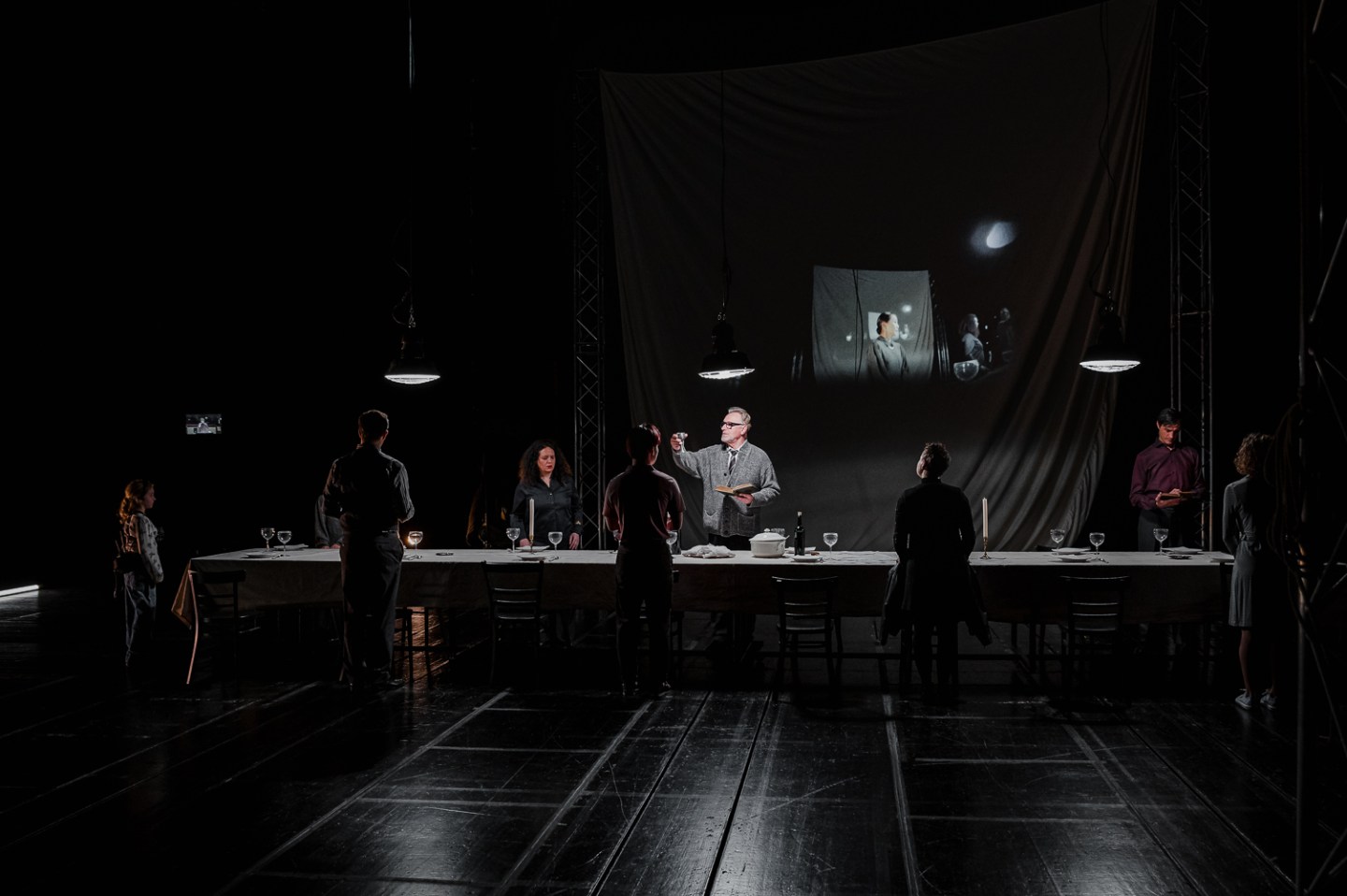
On the morning train to Darmstadt, I finished the final pages of See Under: Love. The rest of the book focuses on the adult Momik, also a writer (a kind of stand-in for Grossman himself), and his search for a language through which to render the account of his great-uncle’s survival and escape from the camps without unjustly diminishing it to “literature.” Though Czernowin’s opera borrows the narrative scaffold of the first chapter, this section was the more resonant with her compositional philosophy. Case in point: in the second chapter, Grossman describes what he calls “The White Room,” the vacuous place of authorial submission where writing about the Holocaust becomes possible at all. Any attempt to adequately capture the sum trauma of Nazi violence against the Jewish people is “doomed to failure,” he says, “because while other tragedies can be translated into the language of reality as we know it, the Holocaust cannot, despite that compulsion to try again and again.” Only in this imagined isolation booth of de-concretization that one finds tucked between gaps of the archive—Momik locates it in the National Library in Jerusalem—can the subject even be tentatively approached:
In this room, you find the essence of those days … but the wonderful thing about it is that there are no readymade answers there. Nothing is explicit. It’s all merely possible. Merely suggested. Merely liable to materialize. Or likely to. And you have to go through everything all over again, by yourself. Without a double or a stuntman to play the dangerous parts.
Nothing explicit; it’s all merely possible. Grossman sounds like Czernowin when he describes “an emotional layer that does not yet have a name because it is so elementary and precedes any process of concretization.”
And then the curtain in Darmstadt came up on a slow-motion strobe-lit psytrance rave complete with DJ and sound booth and the amplified sound of harried breath and everything inside me crumbled.
Before we go any further, you should know that what I’m about to do is an evasive maneuver of critical privilege: I’m going to temporarily bracket the real world and the ongoing suffering in it. Which means bracketing the death of 29,313 Palestinians and counting, the senseless expenditure of civilian life by terrorist regimes, the decades-long complexities of international warfare, and the ongoing censorship of pro-Palestinian voices across Germany. As a result, I will not be making any direct claims for or against the political empathy the staging pressures onto its audience. That would be the obvious riposte. It would be easy to dismiss the production on ideology alone, to criticize the audacity of a blatantly pro-Israeli staging, but this would also be submitting to its logic. Wiegand hopes that we will get caught up in social moralizing and forget to notice the opera, which is all the while saying something very different. So instead, I want to briefly take the production at its word. With Czernowin’s original account of the opera’s global ethics as a metric, I want to seriously consider what it means to think this particular moment of violence against the nation of Israel through this particular opera. By activating “Pnima” as a medium for assembling Israeli responses to October 7, Wiegand’s production wagers that the opera is capable of sustaining an act of nationalism.
I’m just not sure it is.
When any opera is translated to a time outside its story, the first question is always the degree to which the text—that is, the material of the work itself—permits the “reading.” In Amsterdam, for instance, Dutch National Opera is currently showing a production of “La Traviata” that shifts Verdi’s Enlightenment Paris to a deeply abstracted early 20th century and, in doing so, achieves a total revelation of the shifting spaces of intimacy and exchange through which the opera enacts its contracts of death, love, and capital. The staging discovers a visceral modernity in Verdi’s tired warhorse, but only by using new context to uncover something fundamental and specific about the opera. Good interpretations begin with and return to the text, knowing there’s ample room for travel between those apses.
Wiegand’s staging of “Pnima” does the opposite. Suppressing Czernowin’s (conveniently wordless) opera to a substrate, it deflects its audience’s attention to a very obvious external agenda. After the initial invocation of the Supernova Festival (staged, it’s worth noting, as a music-less prologue, a kind of admittance that the actual opera won’t sustain the reference), we watch three men in suits struggling to publicly address the aftermath of violence; a family Seder descending into superimposed orbits of PTSD; and the real-time response to digital announcements calling men to military service. These three sequences are interlaced by a series of abstract tableaus meant to invoke themes of theater, observation, attendance, pursuit, and abandonment, the poetic implications of which we’re left to extrapolate. Grossman’s original narrative framing of the child and the adult is peripherally hinted at by the occasional presence of a young girl, but it reads like an afterthought: the explicit first evocation of the Re’im rave forces everything that follows into contingency that even she cannot avoid.
In short: we witness an impulse—a mimesis of a historical act of violence—and a catalog of its varying impressions and ramifications.
What we see is the erection of an archive.
(Elfriede Jelinek on October 7: “Basically, all one can do is write around this blank of the unspeakable.” The question at hand: Can an archive ever permit that blank?)
III.
Early in Archive Fever, Derrida notes the curious split coordination of the archive between there and here. There, where things of import commence, are preserved here, in this place where authority and social order are exercised. He follows this with the book’s greatest gift, a clean etymology of “archive”:
As is the case for the Latin archivum or archium… the meaning of “archive,” its only meaning, comes to it from the Greek arkheion: initially a house, a domicile, an address, the residence of the superior magistrates, the archons, those who commanded.
The archive first meant house, he says, a private here where the documents of the ruling governance were stored and organized as a symbol of the de facto seat of jussive power. Meaning, as Derrida reaffirms, “There is no political power without control of the archive.”
Over the course of the night, Wiegand’s production enacts this same there/here: that day, that violence, that trauma there, assembled here, in this theater, tonight, for us. It performs the archive’s work of collecting, ordering, and unifying (Derrida prefers the word “consigning”) its documentary domain—given here in the form of theatrical images—to enact the parallel exercise in control: by curating a delimited narrative angle of the war, it institutionalizes a reading of history that makes no account for difference. Derrida again: the archive, by nature, contains no “absolute dissociation… heterogeneity or secret which could separate.” Archivism vests the physical space of the theater with a theoretical satellite command, which Wiegand then turns around and literalizes. With the audience seated at the rear of the stage, the production willfully transforms the performance space into a concrete site of preservation: an archive. We are watching in real time as a dominant power accrues and files, according to degree of intensity, a selective repertory of evidence by which it can legislate a moral standard.
But that’s the complicated version. The problem with Wiegand’s staging can be boiled down to a simple binary. Derrida points out that the archive “marks this institutional passage from the private to the public”—or, we might say, the outside—and “Pnima,” as we’ve already said, means inside, the opera’s un-archivability literally inscribed in the name. So we’re left with an irreducible equation: 1) an archive of theatrical documentation of trauma and its exterior ripples organized under the unifying principles of nationhood, intensity, and time, which is mapped onto 2) an opera which has no archive because it is about that which is too horrible to be adequately encapsulated by one and whose very source is a book about the search for the gap in the archive by which to render interiority.
The ontological disjunction seems evident enough. But Wiegand insists anyway, and makes two careless missteps that betray the glaring distance between opera and production and, by doing so, usurps the communicative thrust of both.
First, he puts the singers onstage. Now, the maddening thing about voices is that we cannot help but attend to them: if we see a body and it makes a sound, we will by nature of our humanity assign an affect and a significance to that utterance. Which means that if we see three middle-aged men in hysterical convulsions, we immediately presume something like, these are men so hurt by circumstance that they have been reduced to whimpers and screams. This fundamentally misreads Czernowin’s music. The vocal writing is not, we’ve already said, corporally pre-linguistic (reversion to primality by a discrete act of pain, this hurts so much that it momentarily precludes my access to words) but rather supra-linguistic or asemic (language is insufficient for the immensity of what I would need to communicate for you to even begin to understand). Said another way, Wiegand mistakes crying out from pain for pain crying. By dragging the sound source into visibility, he localizes Czernowin’s gestures in individual bodies. It’s a bid to increase our empathy for them, but all it really does is reduce the sounds to isolated and personal phenomena that can no longer sustain their universality. He’s not the first to make the mistake—the 2013 production in Lucerne suffered from the same assumption—but by doing so, he undermines any assumption of fidelity to the actual musical text. (It’s hard not to see a gender problem too: she clearly asks for off-stage voices, he puts them onstage anyway.)
And I know this isn’t the point here but it makes all the singers look foolish: thrashing around, forced to hold scores for the hardest passages, they commit the one sin of “noisy” new music that I simply can’t overlook: they relegate it to base images of physical suffering and instantly minimize the music to an impoverished and performative simulacrum of.
(Noa Frenkel, Czernowin’s chosen collaborator, was the sole exception. The alto barely moved her lips all night, giving the effect that her immediately identifiable husk was issuing from the fissures of the orchestra. Nothing in her body betrayed musical extremity: only the flash of heavy-lidded eyes revealed the raging urgency beneath her every sound. In her, as well as in Wen Hui, whose tenuous and unsettled choreography marked one of the night’s high points, Czernowin’s opera was still marginally present; the rest were far afield in Wiegand’s world.)
What begins as an excess of corporal meaning quickly snowballs into the second issue of scenographic quantity. Czernowin has said it of all of her operas, but it is the most true of “Pnima” that it is a work for the ears alone. Music this impossibly detailed and organic requires undivided attention: Claus Guth knew this, and in the original production stripped his stage of everything but two lonely actors and a damp, mottled cellar. Spare changes of light were all he needed to clarify the music’s intravenous dramaturgy. Wiegand (intentionally?) obscures that dramaturgy by loading the whole theater with symbol after accumulating symbol. Along with the five (a third male singer has been added. Why? No idea.) voices, three actors and a dancer crowd the stage, all vying for attention; not to mention the whole cast rave-attendees appearing in the auditorium; holograms and projections moving about the space; a little girl appearing sometimes; a giant sheet eating a woman, a bridge-crossing, bread chucked over dinner, hiding under tables, auditorium chases, all this endless stuff. Even when the images are briefly static and enigmatic, the sheer number of them forces viewers to spend excess energy tying them to one another and the rave, conveniently distracting from the score. Which is probably a good thing anyway: listen too close and we’d notice the music actively rejecting its overloaded visuals.
(The effect of this saturation is better illustrated by contrast. The most successful moment in the staging comes right at the beginning: a thick bulb of dusty orange strains through a heavy fog, and a woman—Wen Hui, somnambular—paces slowly across the rim of the barely visible pit, a backlit silhouette against the void. The music immediately assumes a terrifying closeness because its source of emanation is kept secret and abstracted. I spent the rest of the evening longing for that austerity.)
On their own, though, either of these practical decisions could have been pulled off with success. I firmly believe there’s a version of “Pnima” out there that stages the singers to devastating effect, or an equally effective one of maximal modern symbolism. What sinks the Darmstadt staging is the archivism. In her own statement published in tandem with the production but conspicuously absent from the printed program-books, Czernowin, echoing the same words she used 25 years ago, wrote that “Pnima is absolutely not only about the trauma of the Jewish people… This is a universal subject, and it belongs to all of us.” And therein sits the lie. The work of the archive is inseparable from governance; constructing one is always a bid for power and legitimacy, and so by nature it cannot posture as universal or innominate. It needs to be specific to function. Wiegand’s production, by localizing and making visible an originary violence and then binding each response to this source, effectively federates images of empathy through the logic of the archive into a message of Israeli solidarity that thrums with a suggestion of rightness in time of conflict. This is, already, the architecture of law.
By weaponizing Czernowin’s opera and her birthplace as an excuse for constructing a limited archive of national trauma, Wiegand sends a dangerous message: no art of testimony is potent, authentic, or (dare I say) marketable enough unless it explicitly implicates modern politics. “Pnima” as it is, he seems to suggest, is not enough, though had he staged it exactly the way it was done 24 years ago, the opera still would have had more to say than it does now. This endless demand for all our media to stake an unequivocal claim in contemporary controversy forces them to perform a false relevance that does disservice to both the complexities of the issue and the nuance of the work. Art overwritten with social moralizing becomes a blunt tool for messaging; which is to say, propaganda.
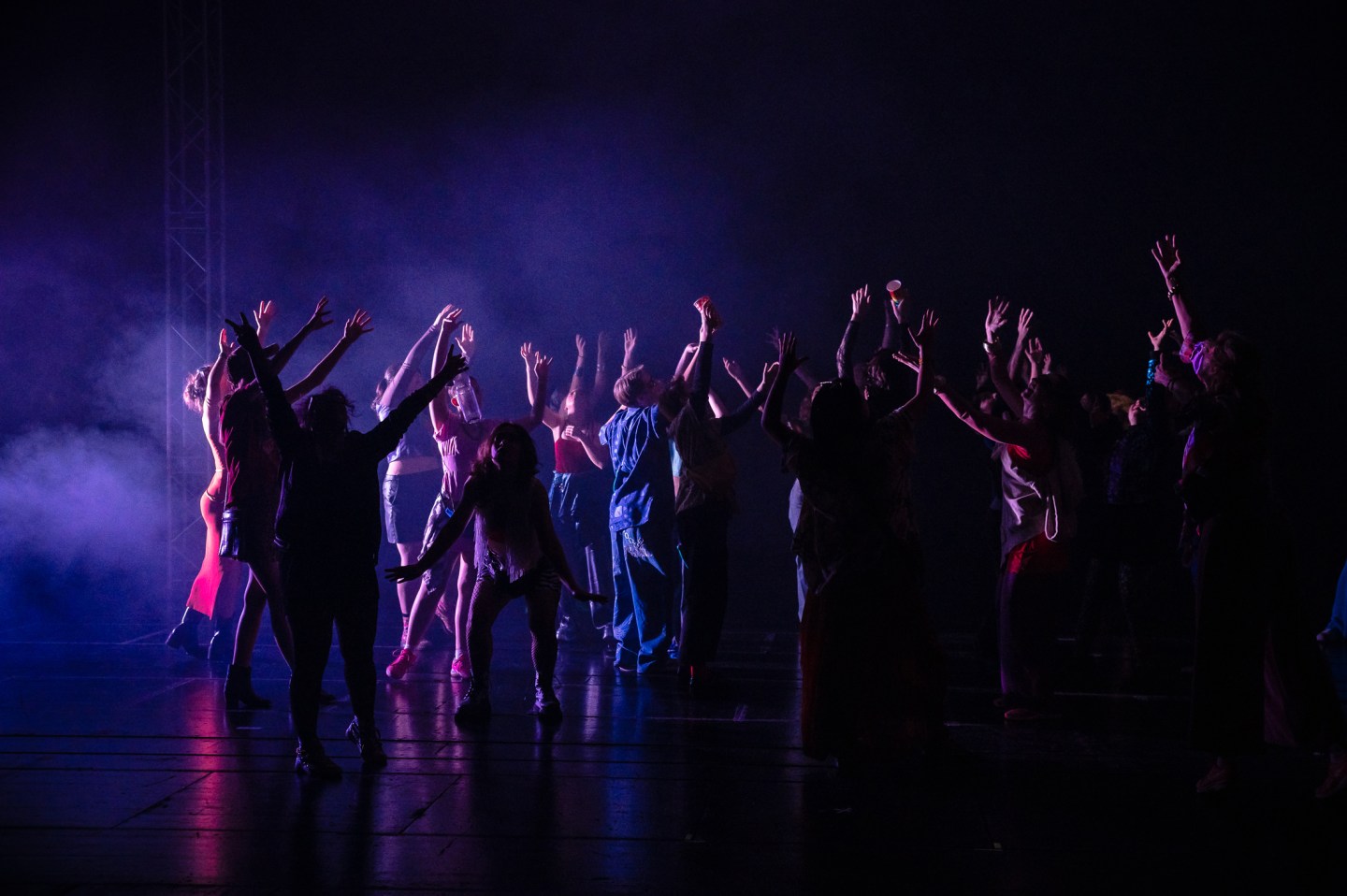
Let me also be clear: I am not saying “Pnima” cannot be about October 7, or about Gaza, nor, even, that it would necessarily be wrong to do so from the perspective of an innocent Israeli populace drawn into conflict by a government appropriating battle as a means of consolidating power. That is a provocative reading that can and should exist. “The Zone of Interest,” Jonathan Glazer’s recent film of domestic life in Auschwitz, aptly demonstrates that we can productively invert the historical background-foreground without demanding a change in our ethical allegiance. But when that vantage point is taken up under the guise of moral aggrandizing without care for the text on which it stands, the responsibility of authorship and intention are thrown into serious doubt. Whose opera is being shown in Darmstadt at the moment? What are the unspoken (financial, social, ethical) motives for presenting the work in this light? And how are we to trust the allegiances of a production that treats its source text with so much disregard?
“Pnima” can have no archive. It exists one step beyond the threshold of consignation and cannot be made to unify or marshal local violence. Any attempt to do so will be undermined by the music. What stands onstage in Darmstadt is a testament to the self-flagellating guilt that still blankets German discourse on the subject of the Jewish experience. The music is elsewhere and far below, whispering of a horror so deep and inarticulate that the soul, having reached it, loses sight in the impenetrable dark.
nothing explicit, it’s all merely possible, remaining in this intangible state and impressing itself upon the depths…
IV.
Now, take the brackets off. Let 29,313 dead Palestinians rush in. The Staatstheater Darmstadt only seats 956. What are we to do with the other 28,357? ¶
Subscribers keep VAN running!
VAN is proud to be an independent classical music magazine thanks to our subscribers. For just over 10 cents a day, you can enjoy unlimited access to over 875 articles in our archives—and get new ones delivered straight to your inbox each week.
Not ready to commit to a full year?
You can test-drive VAN for one month for the price of a coffee.

